Q&A – Ask Neil: October 9, 2025
(Please read these instructions carefully.)
Before you post your question, please look at recent issues to see if someone else has already asked it. You might find your answer there.
How to submit your question…
(Note: You may need to allow a pop-up window to come up in order to get the link for sending your photo(s). If you have already submitted your question and didn’t see the pop-up window, please click here.)
• Click the link provided below to post your question. After you submit your question, a new window will pop up giving you the address to which you can e-mail a SHARP, HIGH-RESOLUTION PHOTO to accompany your question. Please DO NOT SEND THUMBNAIL PHOTOS in case I need to zoom in to see things.
• Click here to post your question.
• Please ONLY POST YOUR QUESTION ONE TIME. We can only accept a set number of questions each week, and when we get duplicates it costs other people their chances.
• One question per reader, please.
• Please use this only for posting questions – not for standard emails.
• Watch for your answer in the following week’s e-gardens.
• I choose those of greatest general interest. For example, plant IDs seldom make the cut.
• I must have your first name or initials.
• I must have your city or county. (Texas is a very large state.)
Important favor: I’ve been covered up so far this year with questions about live oaks losing chunks of bark. Rather than continuing to answer the same questions weekly, I’d ask that you look back to previous issues. You’ll find several replies that I’ve posted. Thanks!
QUESTION 1
WHAT COULD HAVE KILLED OUR PRIDE OF HOUSTON YAUPON HOLLIES?
Question: We have planted Pride of Houston yaupon hollies at some of our jobs, and they are puzzling us. Out of nowhere they started yellowing and are on their death beds. We have proper irrigation. We have applied fertilizer. What could have gone wrong? Noah G., Brenham.
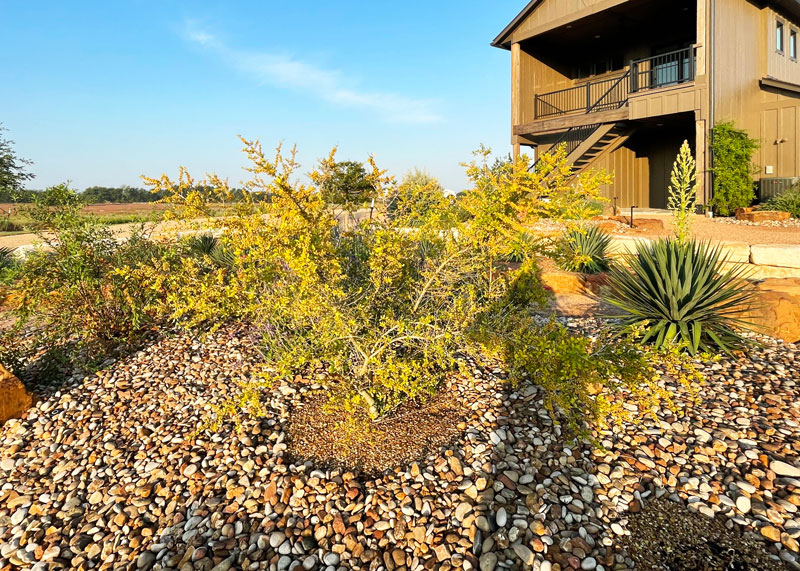
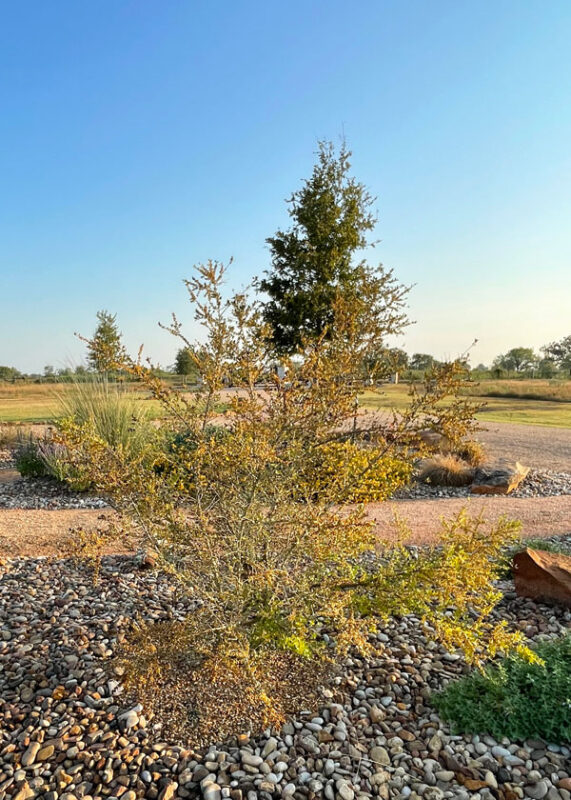
Images clickable for larger views.
Answer: Let me start with what I do not think was involved. This was not insect- or disease-related. It was not caused by a nutrient shortage. Obviously, it wasn’t caused by freeze injury. Of the common things, that takes it down to some relationship with water (too wet or too dry) and some kind of herbicide. A weedkiller certainly would have affected some other plant in the area, so that gets laid aside. All that’s left in my mind is water, and it looks like this (these?) is a relatively new planting. In the photo where I can see your shadow, I can see the size of the original container, and it looks like that was a fairly large plant for the size of the soil ball. Having lost my share of yaupons and other hollies to letting them get too dry in their first year, I wonder if this plant missed one or more crucial waterings. It’s so easy when you have a plant that doesn’t wilt noticeably and doesn’t give you any leeway. Sadly, that’s what this looks like from my experiences. I’ve lost 6 or 8 plants in this manner, and I always find it very frustrating. That would be my best guess.
QUESTION 2
WHY DOES MY REDBUD GET SPOTS ON ITS LEAVES?
Question: From a distance my redbud looks very healthy. However, each year it gets spots on its leaves. Can you tell me what the problem might be and how I can prevent it next year? Deena B., Denton.
Answer: Cercospora leaf spot is the most common cause. You might Google that online and see if it’s a match with what you see on your tree. It results in small brown lesions on the leaves that become most evident late in the season. Fungicides will help stop or slow it if applied during the growing season – probably early summer, but it’s seldom of much concern. I see it on all the redbuds in our woods, and it doesn’t seem to be holding them back.
QUESTION 3
WHAT IS THE BEST WAY TO RID OUR LAWN OF ACORNS?
Question: What is the best way to rid our lawn of lots of acorns? Should a lawn vacuum be rented? Margaret H., Plano.
Answer: That would be the preferred way, although you could also use a power blower to drive them into a pile where you could scoop them up. Vacuums work very well. I like your suggestion.
QUESTION 4
WHAT IS TIMING FOR FALL PRE-EMERGENTS?
Question: I’ve been watching e-gardens like a hawk in order to time my pre-emergent granule application. It seems really late, but I haven’t seen you mention it yet. Have I missed it? Am I doomed? Or is it still too warm? Jen M., Fort Worth.
Answer: You might still get some benefit, but it’s more than a month too late. If you look back at your issues dated August 14, 21, 28 and September 4 you will see that I covered it at those times, primarily in the section marked “Gardening This Weekend.”
QUESTION 5
WHAT IS THE ISSUE WITH MY ALTHAEA?
Question: I know it’s the end of the season, but this spring when it first started to show yellow around the edges of its leaves, I applied iron granules and then about a month ago I used liquid iron. The leaves never lost the tinge of yellow. What is wrong with them? Renvy S., Rising Star (Eastland County).
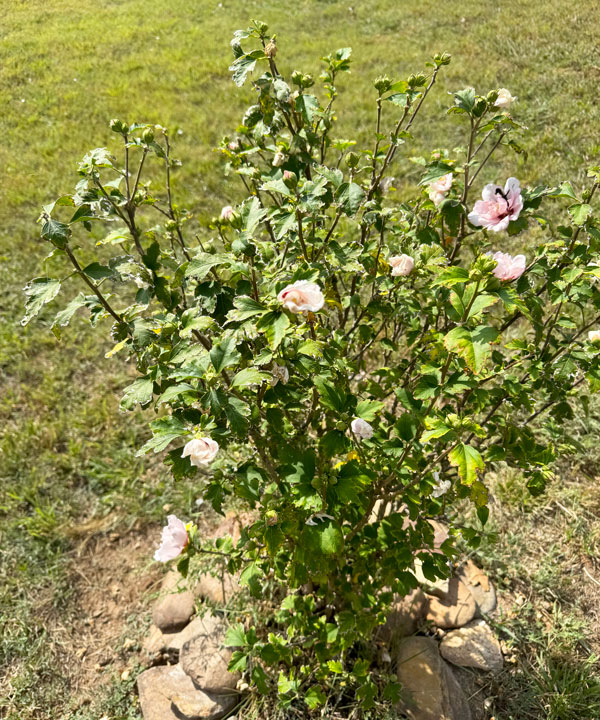
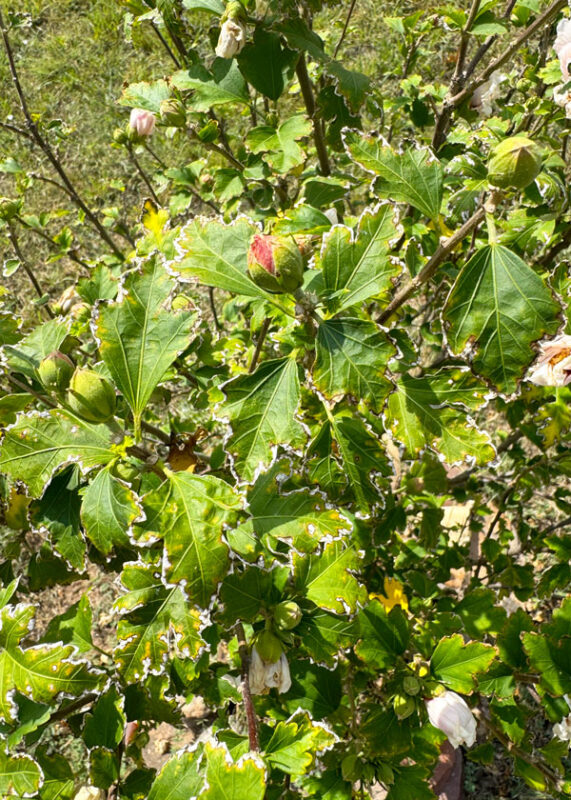
Images clickable for larger views.
Answer: This is not iron deficiency. Symptoms for iron deficiency would always be yellowing between the veins with the veins remaining dark green for the longest time. It also will be much more pronounced at the ends of the branches (on the newest growth first).
This is leaf scorch of some sort, meaning that water did not get out to the edges of the leaves uniformly. It can be caused by plants getting too dry (that’s logical!). It can also be due to excessive mineral salts or too much fertilizer, high winds, sodium in the irrigation water, trunk or root damage, and a host of other possibilities that are impossible to diagnose from photos. The best advice I can give is to keep the plant watered well during dry spells.
I should also warn you that althaeas are highly susceptible to a soil-borne fungus known as cotton root rot. It normally kills its victims quickly (a few days to a few weeks), but I’ve seen it hang on for a year or two. If your plant fails to leaf out next spring, that might be the cause.
QUESTION 6
WHY WOULD BARK BE FALLNG OFF MY CEDAR ELM?
Question: What would cause the bark to fall off my cedar elm? This just started over the past month. Could this have been caused by squirrels? The canopy looks full and healthy. Charity H., Denison.
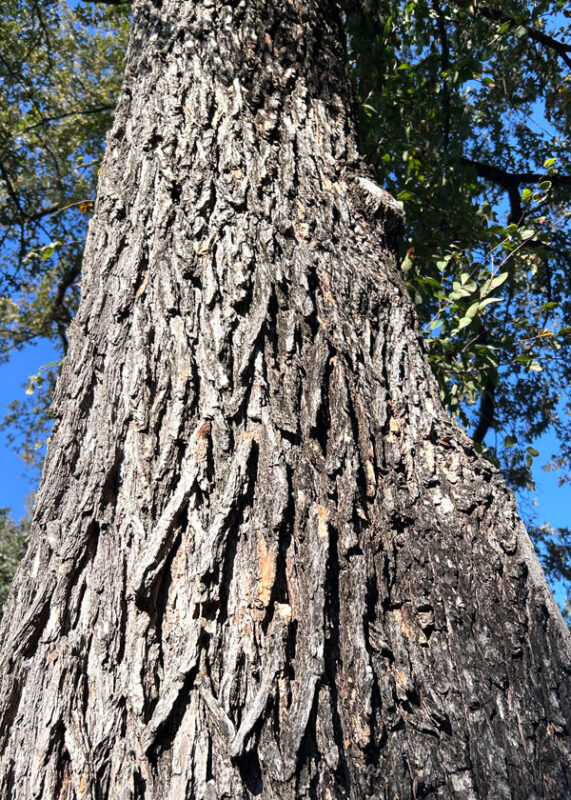
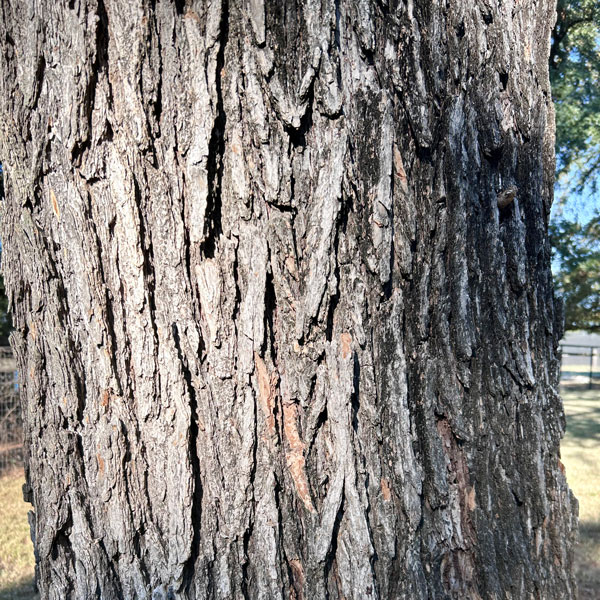
Images clickable for larger views.
Answer: I don’t see anything that concerns me from your photos. Bark is a dead tissue that can’t expand as a tree’s trunk grows larger with age. All bark eventually falls to the ground. Indeed, it very well could be squirrels peeling chunks of it loose as they sharpen their teeth. I find no cause to worry here.
QUESTION 7
WHAT WOULD HAVE CAUSED THIS ONE BRANCH TO DIE?
Question: These shrubs have grown very well until recently. One of them has limbs that have died completely to the ground. I cut them off at their base, but I have no idea what happened. Can you help? Karen D., Midland.
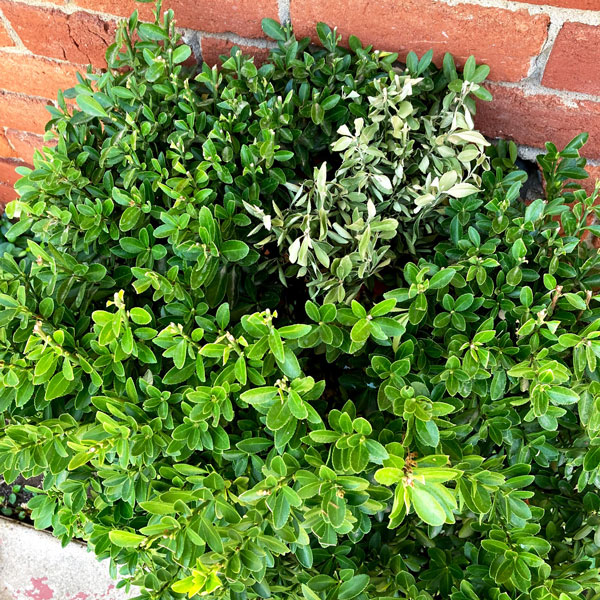
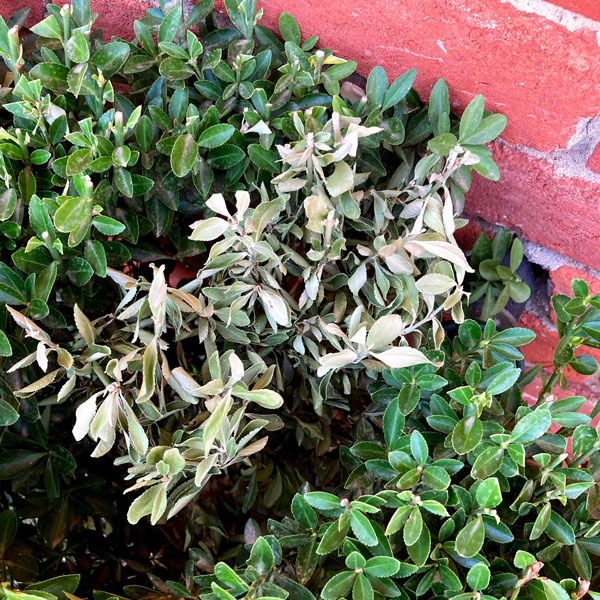
Images clickable for larger views.
Answer: You have boxleaf euonymus, which normally would put us on edge for euonymus scale. However, this doesn’t look like damage that scale would do. Plus, you would be able to see the scale insects on the stems and leaves. I’m more inclined to think there has been some type of injury done to that stem. Something may have fallen onto it and snapped or cracked it down out of sight. I wasn’t sure if you had already removed all of it, but if not, examine the stem closely for any type of damage. I’ve also seen bacterial stem canker cause damaging galls on the stems of this plant variety. Whatever caused the problem is farther down, out of this line of sight.
